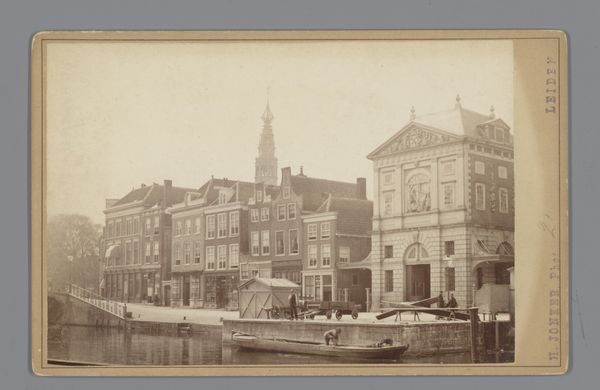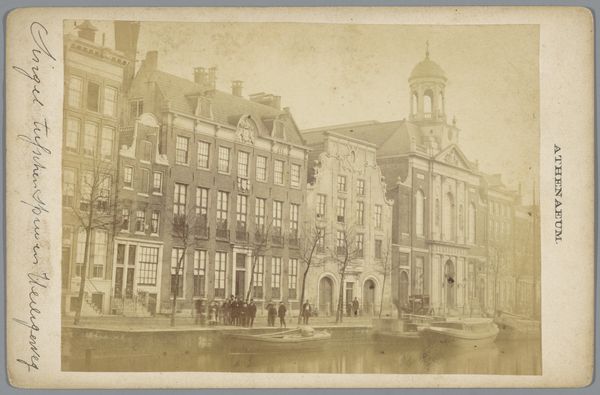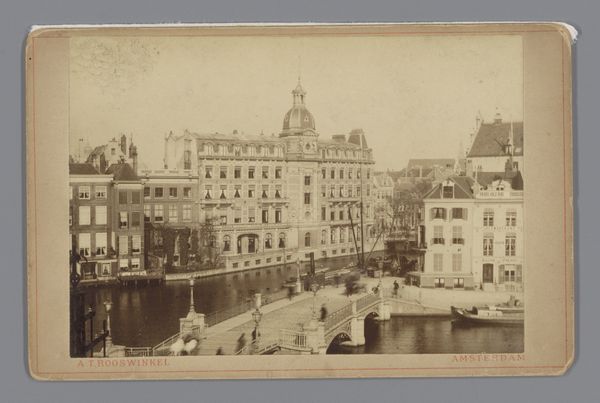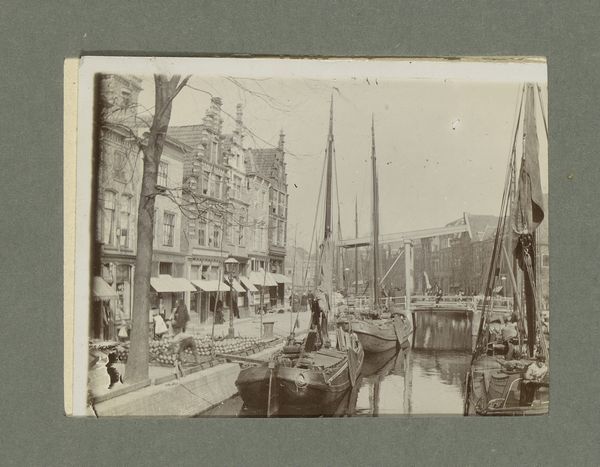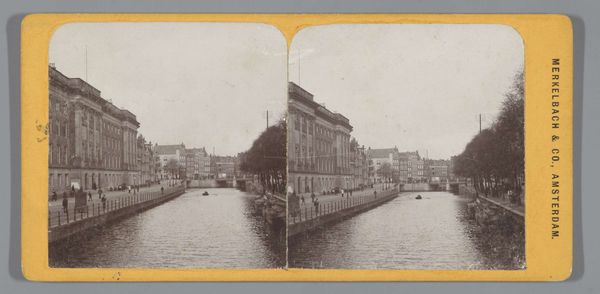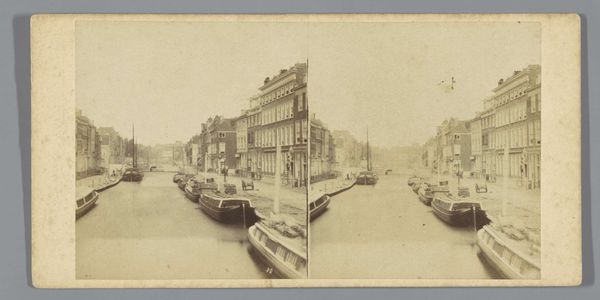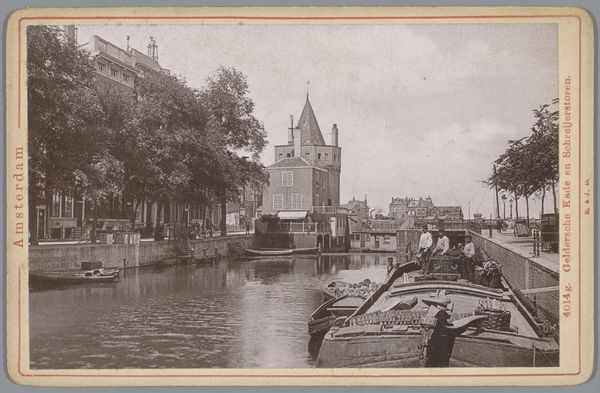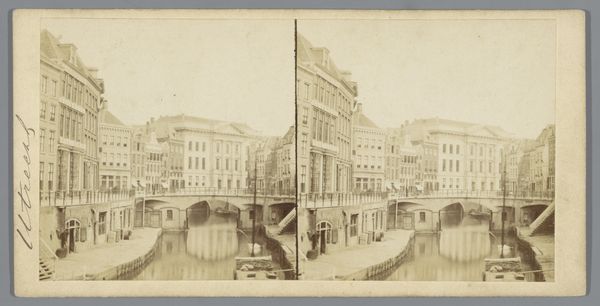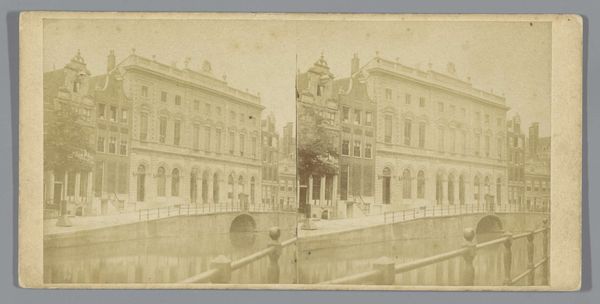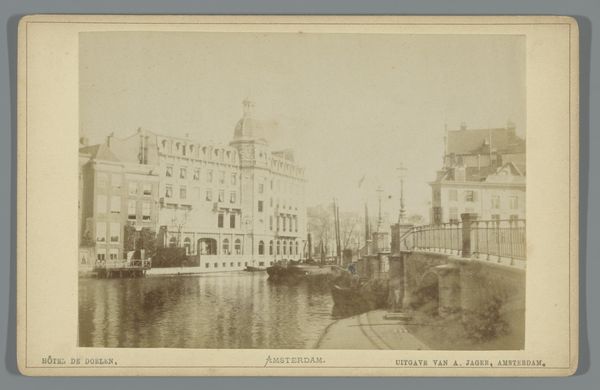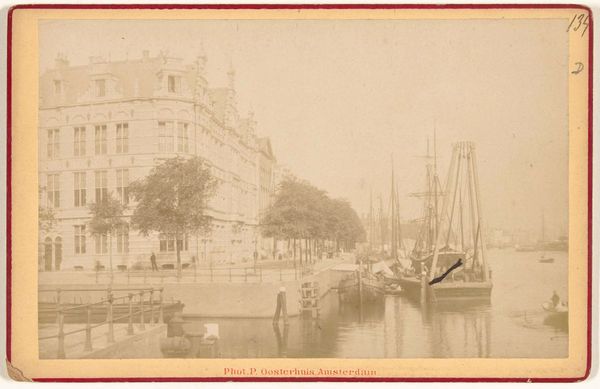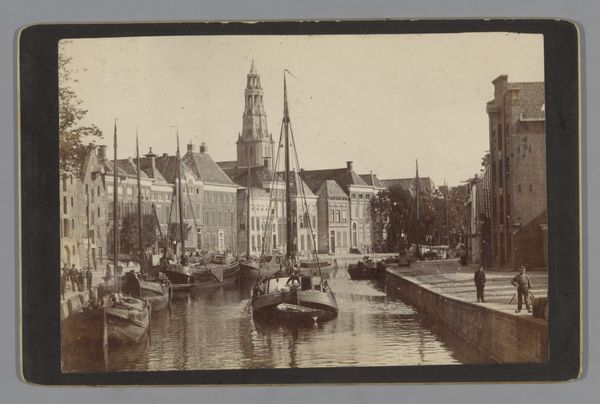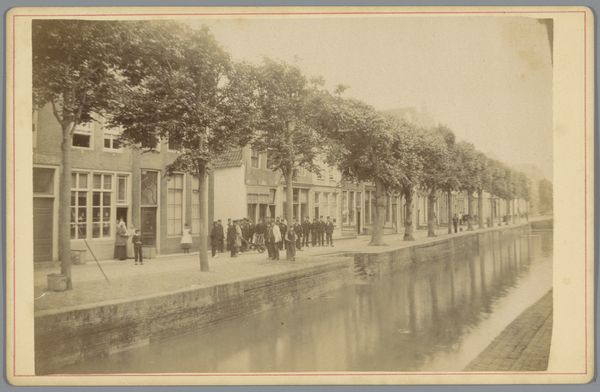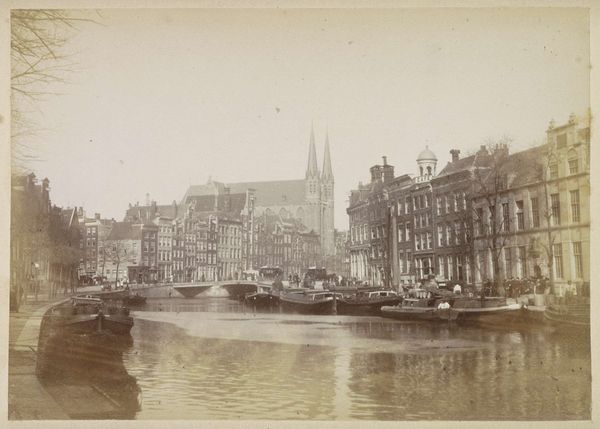
photography, albumen-print
#
16_19th-century
#
photography
#
cityscape
#
albumen-print
#
realism
Dimensions: height 108 mm, width 167 mm
Copyright: Rijks Museum: Open Domain
Curator: Ah, here we have "Gezicht op de Waag aan de Aalmarkt te Leiden," a cityscape captured in an albumen print by Jan Goedeljee, sometime between 1850 and 1900. Editor: There's a stillness to it. The sepia tones imbue the scene with a melancholic tranquility, despite all the implied activity. The reflections in the water create a doubling effect, which adds depth. Curator: Precisely. Goedeljee employs the inherent tonal range of albumen prints to give geometric forms of architecture and the bustling Aalmarkt. The photograph's realism style suggests it aimed to document the city faithfully. We see strong verticals with a dominant horizontal base. Editor: It also communicates a narrative. This Waag, the weigh house, anchors the market scene socially and economically. These merchants, carts and boats remind me of a moment in this city's commerce life cycle, and these city buildings will be the stages that host this. Curator: The meticulous details captured by the albumen print provide insight into urban development and daily life during that period, a fascinating perspective through 19th-century Dutch society, really. Note how the architecture serves as a backdrop, the focal point rests with the subjects, or vice versa, the composition really makes the viewer question. Editor: Indeed. The photograph also alludes to Leiden's role as a hub of trade. It seems like this photographer sought a kind of 'frozen moment' amid all this hustle and bustle. Curator: From my point of view, this photographic frame becomes a window into history, allowing us a clear, and incredibly beautiful observation to this market scene. The architecture, boats and water become like a still-life tableau almost. Editor: I can see that. As a record, it lets us consider how economic structures shape visual culture; it is very thought provoking. It's a very serene portrait. Curator: I think I agree with your description of the serenity—it seems a fitting sentiment with which to conclude.
Comments
No comments
Be the first to comment and join the conversation on the ultimate creative platform.
